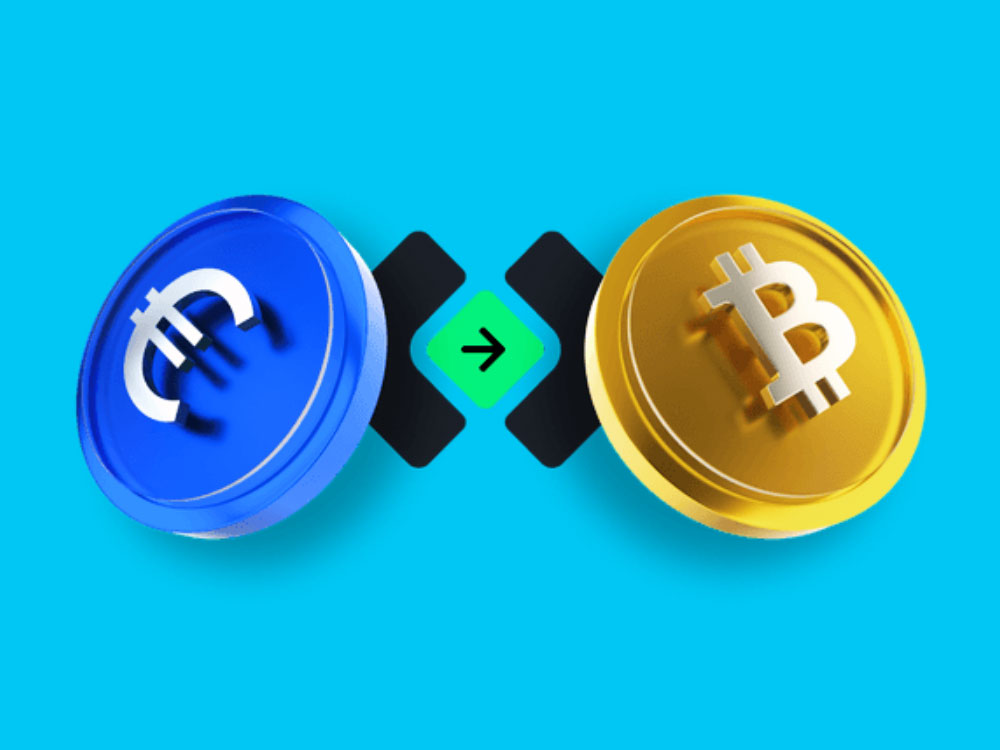Stablecoins used to be primarily seen as a bridge between crypto and fiat — a way for traders to hedge cryptocurrency volatility or move their cryptocurrency across exchanges. But that story is changing — and fast. Scroll forward to 2025, and the stablecoins are quietly becoming absorbed into the very fabric of how enterprises function. From distribution of e-commerce platforms to payroll systems, and from B2B vendor payments to cross-border settlements, stablecoins are not just tokens for speculation anymore. They are providing the foundational financial primitives in an increasingly programmable, cross-button, deeply integrated digital financial system that is the next stage of digital finance.
The Rise and Evolution of Stablecoin Adoption
Stablecoins are blockchain-based digital tokens with price links to reserve-backed assets including national fiat currencies or gold. These coins are meant to be additive to value store while delivering the blockchain’s marquee features: speed, programmatic logic, transparency, and low transaction costs.
And this change is grounded on good data:
- The stablecoin supply is also up 28% over the past year, suggesting increasing demand.
- The global stablecoin supply increased 63% from February of 2024 to February of 2025, underpinning more than $35 trillion in transactions over that time.
- More monetary value was transacted in stablecoins in 2024 than the combined sum of Visa and Mastercard, representing a sizeable behavioral and infrastructural pivot.
Also read: The Rise of Localized Ramps: Stablecoin Access in Africa, LATAM, and SouthEast Asia
Why Businesses Are Embedding Stablecoins into Products
Three powerful forces are underpinning the increasing integration of stablecoins within today’s generation of software products and financial services — inefficiencies in legacy systems, emergence of regulation, and the power of developer enablement.
- Fixing Global Payment Inefficiencies
Conventional payment infrastructures, particularly when it comes to cross-border payments, are frequently slow, costly, and rife with reconciliation issues. Companies depending on SWIFT, correspondent banks and outdated foreign exchange systems are subject to multi-day processing delays, obscure fees and burdensome paperwork.
For industries such as e-commerce, logistics and global services — where speed and margin make a difference — this kind of delta is game changing.
- Building Institutional Confidence and Clarity on Regulation
Thus ends the confusion and inconsistencies of the past. The European Union has also adopted MiCA, integrated framework for regulating stablecoins. In the U.S., the GENIUS Act and STABLE Act, among other legislation, should give institutional participants the confidence to embrace blockchain-based assets. In January 2025, a historic executive order issued by the U.S. government designated stablecoins as “critical financial instruments.”
Institutions are responding:
- It is worth noting that PayPal also released its own stablecoin, PYUSD.
- Standard Chartered, Bank of America and Stripe have all either issued stablecoins or developed infrastructure to support them.
- The issuer of USDC, Circle, currently has around $99 billion in its coffers in short-term U.S. government assets to back real-time redemptions, so that it maintains its value peg, with strong transparency.
As trust grows, businesses are viewing stablecoins as more than simply faster alternatives—but as safe, regulated strategies to integrate into their operations.
- Developer Tooling and Integration Readiness
Developers today don’t need to invent whole cryptoeconomic infrastructures themselves. With available stablecoin APIs, SDKs, smart contracts, custody solutions, teams can integrate stablecoins into platforms with little friction.
As a result, we’re seeing a surge of developers building stablecoins into digital products, such as:
- In-app payments in e-commerce platforms
- Cross-border payouts in freelance platforms
- Automation in Treasury within the corporate finance solution
- Logistics and SaaS cryptographically linked Milestone-based vendor payments
Real Use-Cases for Integration of Stablecoin
The transition from the abstract to the concrete is illustrated best by example. In various industries, stablecoins are being incorporated into workflows that previously depended on clunky, high-overhead systems.
Cross-Border Payments and Remittances
Stablecoins provide a lifeline for cross-border transfers. When compared to the world average cost of remittances in Q3 2024 of 6.62%, stablecoin-related remittances were between 0.5% and 3% depending on which platform was used. Firms like Starlink have leveraged stablecoins to repatriate foreign earnings efficiently, and migrant workers are using USDT or USDC to send wages home in minutes.
E-commerce and Merchant Settlement
Services like Shopify can enable retailers to accept USDC, funds that settle nearly instantaneously. Unlike credit card fees, stablecoin payments have sub-cent transaction costs and no payment lag. Merchant stablecoin processed $710 billion/month of volume in March 2025, or nearly 70% of Visa’s monthly processing volume.
Firms like Stripe, Visa and Checkout. com are adding stablecoin payment capabilities to save money and speed reconciliation of their treasuries.
B2B Platforms and Corporate Treasury
Enterprises are utilizing programmable stablecoins to initiate payments upon delivery milestones or digital approvals. Companies such as ScaleAI leverage stablecoins to be able to quickly pay international contractors. Meanwhile, the company Citi has teamed up with Maersk to automate fuel payments for ships and Siemens leverages stablecoin flows to pay by printer output volumes.
Also read: Global Regulation of Stablecoins in 2025: GENIUS Act, EU MiCA & Asian Competition
How Developers Are Integrating Stablecoins:
When developer-first infrastructure is ready for stablecoins, you can add support to an app in a fraction of the time and in more modular ways. Developers are now using:
- Deposits, Transfers and Withdrawals APIs for Stablecoin
- Custody SDKs for secure wallet management
- Smart contract for programmable conditions with automation
- On/off ramps for converting between crypto and fiat
For instance, a global SaaS organization could leverage Transfi to:
- Accept subscription fees in USDC
- Exchange money for local currency to pay suppliers
- Automate compliance processes within an integrated dashboard
- Unify all transactions into existing accounting systems
That billing and settlement infrastructure is designed to support the integration of payment with stablecoin, without needing to have a very deep layer of understanding around blockchain.
Navigating Challenges and Risks:
But despite the potential, integrating stablecoins into financial processes demands considering the risks and limitations.
First, there’re still regulatory uncertainly across different jurisdictions. With MiCA and U.S. laws in flux, international cooperation is missing. In some jurisdictions, businesses need to adhere to KYC, AML, and tax laws regarding cryptocurrency.
Second, is transparency of reserves and stability of pegged exchange rates. Situations like USDC’s temporary de-pegging following Silicon Valley Bank’s failure demonstrated how off-chain risks could affect confidence.
Third, the technical complexities of integration — choosing the optimal blockchain, developing secure smart contracts, handling private keys, and creating user-friendly interfaces — should not be underestimated.
Conclusion:
Stablecoins are not longer just crypto rail infrastructure — they are ascending as a base layer for programmable money. As finance goes digital around the world, businesses that embed stablecoins today are set up best for tomorrow’s cross-border, real-time economy.
Whether reducing fees in e-commerce, automating treasury workflows, or advancing financial inclusion in underserved regions, stablecoins are a rare convergence of efficiency, access, and developer flexibility. Their real power is not speculation, but integration.
In turn, infrastructure providers such as Transfi have made it easier for developers to build new applications by enabling them to access their APIs, compliance tooling, and fiat on/off ramps, to name a few. The question isn’t whether you should embed stablecoins, but when.
🔍FAQs:
- What are stablecoin product flows?
Stablecoin product flows describe the ways that stablecoins are built into financial or software products — like payment systems, treasury tools or SaaS platforms – to move money in programmatic, real-time manner.
- How are stablecoins integrated into apps or platforms by the developers?
Stablecoin flows are constructed by developers utilizing APIs, SDKs, smart contracts, and custody services. That’s where platforms like Transfi come in, they provide turnkey solutions to support your compliance, liquidity, and on/off ramps.
- Is it legal to conduct business with stablecoins?
Yes, in most jurisdictions. From MiCA in the EU to pending legislation in the U.S., stablecoins are asserting themselves on the regulatory stage. Businesses should ensure KYC/AML compliance.
- What are typical use cases for stablecoin integration?
Use cases include cross-border payroll, in-app micropayments, e-commerce settlement, B2B invoice automation and treasury management.
- What are the primary risks of stablecoins?
The risks came in the forms of regulatory ambiguity, peg stability, reserve transparency, and technical complexity. Well-audited, regulated stablecoins and strong platforms make them less likely.
Table of Contents
Suggested Article
Explore our products

Make global payments at the speed of a click

Accept payments, remove borders.

Unlock Seamless Digital Currency Transactions Anywhere








.png)














